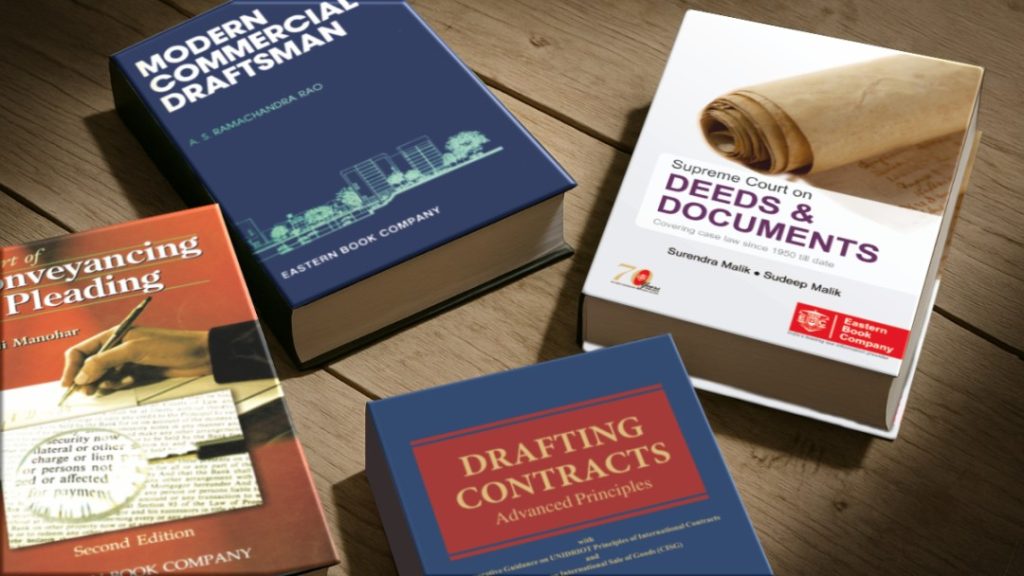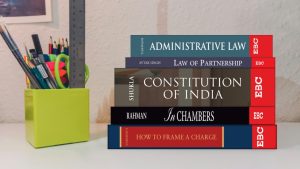
Conveyancing is one of the most essential yet often overlooked areas of legal practice, particularly in property law. It plays a critical role in ensuring that the legal transfer of property rights is smooth, transparent, and enforceable. For law students preparing to enter legal practice—especially in fields like real estate, corporate law, or civil litigation—understanding the conveyancing process is indispensable. This guide will walk you through what conveyancing is, the relevant laws, stages of the process, key documents, and professional responsibilities, all with a focus on Indian law .
What is Conveyancing?
Conveyancing refers to the legal process of transferring ownership of immovable property—such as land, houses, or commercial premises—from one party (the seller/transferor) to another (the buyer/transferee).
This process includes:
- Drafting and reviewing legal documents (like the sale deed),
- Conducting title verification,
- Ensuring compliance with statutory requirements, and
- Facilitating the registration of the transaction under the applicable laws.
Why is Conveyancing Important?
Conveyancing ensures that:
- Legal title is transferred correctly and securely;
- The transaction is valid, binding, and enforceable;
- All encumbrances, disputes, or liabilities are identified and cleared;
- The buyer’s interest is protected against fraud or litigation;
- The transfer is recorded and registered in the public domain (e.g. at the Sub-Registrar’s office).
In other words, conveyancing minimizes legal risk in property transactions.
Relevant Laws Governing Conveyancing in India
Conveyancing in India involves compliance with several central and state statutes. The key legal instruments include:
1. The Transfer of Property Act, 1882
- Governs the transfer of ownership of immovable property.
- Sections relevant to conveyancing:
- Section 54 – Definition of sale;
- Section 55 – Rights and liabilities of buyer and seller;
- Section 58 – Mortgage of property;
- Section 105 – Lease agreements.
2. The Indian Contract Act, 1872
- Governs agreements and enforceability.
- A sale agreement must have elements like offer, acceptance, lawful consideration, and lawful object.
3. The Registration Act, 1908
- Section 17 makes registration mandatory for instruments that transfer interest in immovable property valued above ₹100.
- Section 49 – Non-registration renders such documents inadmissible in evidence in court.
4. The Indian Stamp Act, 1899
- Governs stamp duty, which varies from state to state.
- Unstamped or insufficiently stamped documents can be impounded and declared unenforceable until proper stamp duty is paid.
5. The Real Estate (Regulation and Development) Act, 2016 (RERA)
- Governs real estate transactions and provides transparency in dealings with developers/promoters.
- Ensures buyers are not misled in under-construction projects.
6. State-Specific Laws
- E.g., Maharashtra Land Revenue Code, Delhi Land Reforms Act, or Karnataka Land Reforms Act.
Key Stages of the Conveyancing Process
Let us now explore the step-by-step process involved in a typical conveyancing transaction:
1. Title Search and Due Diligence
Before anything else, a lawyer must:
- Verify that the seller has clear and marketable title;
- Examine documents from the past 30 years (or more) if necessary;
- Check for encumbrances (like mortgages, charges, or pending litigation);
- Verify mutation entries, property tax receipts, and land use classification;
- Confirm there are no violations of zoning or urban development laws.
2. Drafting the Agreement to Sell
This is a preliminary agreement that:
- Confirms the buyer’s and seller’s intent to transact;
- Lists the agreed price, payment schedule, possession timeline, and conditions precedent;
- Must be signed by both parties and may optionally be registered or notarized.
3. Payment of Stamp Duty
- Stamp duty is payable before registration.
- The amount depends on:
- Market value of the property;
- Whether the buyer is male/female/joint owner (rates vary in some states);
- Location of the property (urban vs. rural).
4. Drafting the Sale Deed
- This is the core document that legally transfers ownership.
- Must include:
- Full description of the property,
- Sale consideration,
- Title history,
- Date of possession,
- Indemnity clauses.
- Must be executed on non-judicial stamp paper of the proper value.
5. Registration of the Sale Deed
- Mandatory under Section 17 of the Registration Act.
- Takes place at the Sub-Registrar’s office with:
- Both parties present (or through power of attorney),
- Two witnesses,
- Valid ID and PAN card,
- Latest property tax receipts and utility bills.
6. Post-Registration Activities
After registration:
- Apply for mutation of title in municipal/revenue records.
- Update property tax and utility bills in buyer’s name.
- Inform the housing society or development authority (if applicable).
- Store certified copies of the sale deed and registration receipt safely.
Types of Conveyancing in Practice
Understanding the different modes of conveyance is crucial. Each type has specific requirements.
| Type of Transfer | Document Used | Legal Basis |
|---|---|---|
| Sale | Sale Deed | Transfer of Property Act, Sec. 54 |
| Gift | Gift Deed | Sec. 122–129 of Transfer of Property Act |
| Mortgage | Mortgage Deed | Sec. 58–104 of Transfer of Property Act |
| Lease | Lease Deed | Sec. 105 of Transfer of Property Act |
| Relinquishment | Relinquishment Deed | Typically among legal heirs |
| Exchange | Exchange Deed | Sec. 118 of Transfer of Property Act |
| Partition | Partition Deed | Among co-owners or co-parceners |
Duties and Responsibilities of a Conveyancing Lawyer
As a law student preparing for professional practice, it’s important to understand your ethical and legal responsibilities when acting as a conveyancer:
- Conduct thorough due diligence to protect your client from future disputes.
- Ensure compliance with all statutory formalities—including registration and stamp duty.
- Draft clear and unambiguous documents that leave no room for interpretation.
- Safeguard client confidentiality and avoid conflicts of interest.
- Advise clients transparently on risks, timelines, and costs involved.
Common Mistakes in Conveyancing (and How to Avoid Them)
Even seasoned professionals can make errors in conveyancing. Some of the most frequent include:
| Mistake | Why It’s a Problem | How to Avoid |
|---|---|---|
| Inadequate title search | Buyer may get defective title | Check for 30+ years chain of title, encumbrances |
| Wrong stamp duty calculation | Document may be invalid | Use official ready reckoner or seek advice |
| Not registering the deed | Deed has no legal effect | Mandatory under Registration Act |
| Vague property description | Leads to disputes | Use survey numbers, boundaries, GPS coordinates |
| Poorly drafted clauses | Legal loopholes | Use standard templates + review clauses |
As you move from theory to practice, conveyancing will become a foundational skill—especially if you pursue litigation, civil law, real estate, or even corporate legal roles (where land acquisition is frequent).
By understanding:
- The legal framework,
- The procedural requirements, and
- The practical nuances of drafting and registration,
you position yourself as a capable, competent, and trustworthy legal professional.
For a deeper dive in the topic, you may check out this resource.
















